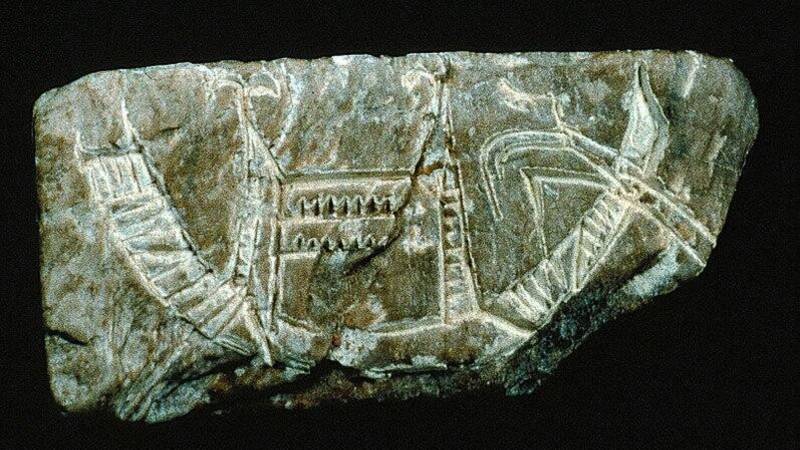
Meluhha is the Sumerian name of a land situated to the east of Mesopotamia or modern-day Iraq. It was the prominent partner of Sumer during Middle Bronze Age.
Meluhha: Its People, their Language and Trade
The identification of Meluhha remains an open question, but most of the scholars associate it with the Indus Valley Civilisation. In the Sumerian language Malah means a sailor or captain. The word Malah is also found in Akkadian loans in Ezekiel (27: 9, 27, 29), a book of the Bible. Its citation elsewhere in the Hebrew Bible is Jonah 1:5. In Hebrew it was mlh, while in Akkadian it became malahu with Akkadian meaning seaman or sailor. (See: Noonan, Non-Semitic Loanwords in the Hebrew Bible.)
J.M Schader (2016) writes that the word from the Akkadian malahu, which is in turn borrowed from the Sumerian malah (ma “ship”+lah “going”=”travelling in a ship”). It also means the one who pulls the ship or to set in motion.
Explaining the location of Magan and Meluhha, Gwendolyn Leick in his Historical Dictionary of Mesopotamia (2010) writes that, “Geographical terms for regions in the distant south and southeast of Mesopotamia. Both names first appear in a royal inscription of the Akkad period. “Ships from Magan and Meluhha” were said to have brought goods to the quays of Akkad and other cities. It has been proposed that Magan referred to the coast of Oman along the Persian Gulf, rich in copper and dates, and Meluhha was the Indus Valley. Shu-ilishu (2020 BC) was translator of Meluhan language in Akkad.
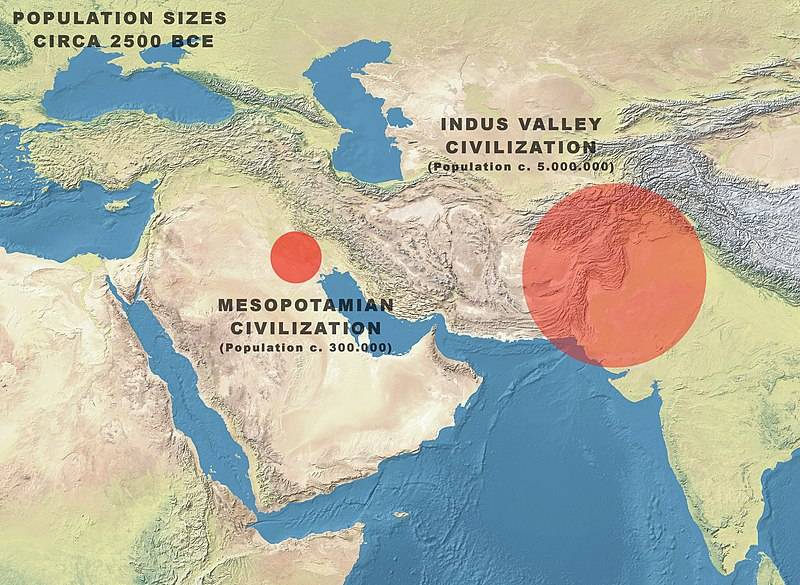
Meluhha: Etymological Interpretations from past to present
Asko Parpola and Simo Parpola identify Meluhha (earlier variant Me-lah-ha) from earlier Sumerian documents with Dravidian “mel akam” which means high abode or high country. According to Mesopotamian texts and records, it was land of seafarers. One theory is that word Meluhha is derived from Dravidian name for Sesame Oil (ilu in Sumerian and ellu in Akkadian).
However, Michel Witzel, who associates the Indus Valley Civilisation with the ancestors of Munda speakers, suggests that word for wild Sesame is Jar-tila. Asko Parpola also relates Meluhha with Mleccha (speakers of ‘impure’ language) who were considered non-Vedic barbarians in Vedic Sanskrit. Parpola writes in The Roots of Hinduism (2015) that Sumerian magilum (“Meluhhan Boat”) may be the Dravidian mangi (“coastal trading ship”), and Meluhha as “black land” may be Sindh, from its almost black soil.
Enki and Ninhursag on Meluhha (c. 2350–2150 BC)
The foreign land of Meluhha is also mentioned in the mythological legend of Enki and Ninhursag:
“The magilum boat of Meluhha, May transport gold and silver, May bring them to Nippur for Enlil, the (king) of all the lands.”
“Then he proceeded to the land of Meluhha, Enki, the king of apsu, decreed his fate: ‘Black land, May your tree be a big tree, May (your) forest be of highland ‘mess-trees’.”
“May the land of Tukric hand over to you gold from Harali, lapis lazuli and…”
“May the land of Meluha load precious desirable carnelian, mec wood of Magan and the best abba wood into large ships for you. May the land of Marhaci yield you precious stones, topazes.”
“May the land of Magan offer you strong, powerful copper, dolerite, stone and cumin stone.”
Meluhha and Early Dynastic Period (2900-2350 BC)
“May Magan and Meluhha submit to you!” – we find a hymn addressed to a king or deity.
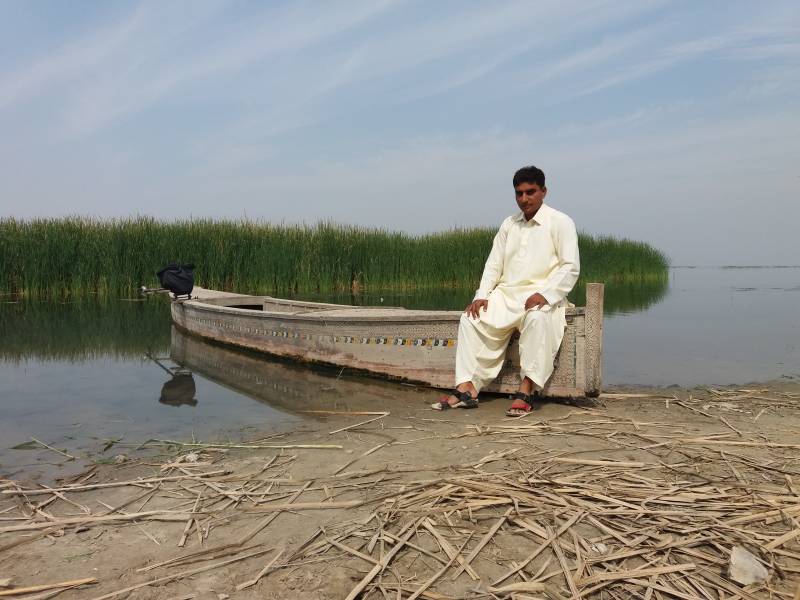
King Sargon of Akkad and his Meluhha Inscription (R. 2334–2279 BC)
Sargon was the King of the Akkadian Empire. He ruled from 2334–2279 BC. He was called Sar-um-GI in Sumerian and Sa-ru-GI in Akkadian languages. When he became a youth, he was visited by Ishtar, goddess of desire, fertility, storms and warfare. He was cupbearer to the King of Kish in Sumer. Afterwards he overthrew him and started military campaigns in all directions. He established world’s first empire. King Sargon ruled 56 years over a vast empire stretching from Mesopotamia to Mediterranean Sea, Elam, Marhashi (Jiroft), and east. He promoted trade and commerce within Mesopotamia and Meluhha. Dilmun, Magan and Meluhha were the foreign lands for Mesopotamians. Both Magan and Meluhha had high lands or mountains rich in gold, silver and copper.
WF Albright writes in his paper “New light on Magan and Meluhha” (1922) that,
“Lest the problem should be cleared up too speedily, our new vocabulary furnishes and additional complication; line 13 has (b-d) kur Ma-gan-naki mat Si-id-di-ri (mat M) i-is-r(i). As Col. B contains only old Babylonian names from the third millennium, we may consider Siddiri as an early form of the same word which later appears in Babylonia as Misri, Misir, and in Assyrian as Musri, Musur.” (Page 319)
An inscription by Sargon the king of the world gives names of following foreign lands: “Ma-me-luh-ha.KI” (Meluha), “Ma-ma-gan.KI” (Magan) and “Ma-tilmun.KI” (Dilmun). Douglas Faryne has given this inscription in his book The Royal Inscriptions of Mesopotamia/ Early Periods, Vol.2 Sargonic and Gutian Periods (2334-2113 BC), Canada, 1993:
“Sargon, king of the world, was victorious (in) 34 battles. He destroyed their (city) walls as far as the shore of the sea.” (Page 28)
“He moored the ships of Meluhha, Magan, and Tilmun at the quay of Agade.” (Page 28)
“The Meluhhans, the people of the black land, brought exotic wares down to her.” (Inana) From The Curse of Akkad (Cooper 1983:53.48f)
“The bridge of Baza on the edge of the road to the land of Meluhha”. (Grayson 1974-7: 59f)
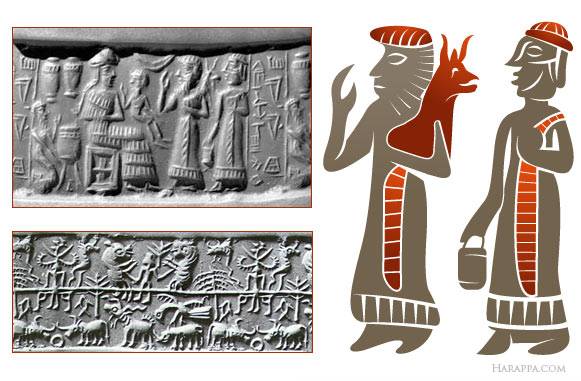
Campaign of Rimush against Abalgamas, King of Parahsum (Marhasi)
Sargon was succeeded by Rimush who reigned nine years. King Rimush started military campaigns against the cities of Adab, Zabala, KI.AN, Umma, Lagash, Ur and Persian Gulf region. He expelled thousands of residents from their cities and destroyed city walls. Rimush also fought against Zahara, Elam, Awan, Susa and Parahsum. A cuneiform tablet reads:
“Further, he conquered the cities of Elam, destroyed their walls, and tore out the foundations of Parahsum (from the land of Elam)” (Page 53)
“When he conquered Elam and Parahsum, he took away 30 minas of gold, 3,600 minas of copper and 300 male and female slaves and dedicated (them) to god Enlil.” (Page 55)
“Zahar, Elam, (G)upin, and (Me)luhha assembled in Pa(rah)sum for battle, but…” (Page 58)
Campaign of Manishtusu against Magan lords (R. 2270–2255 BCE)
Manishtusu was also son of Sargon the Great of Akkad. Akkadian campaigns against Magan took place in the 23 century BC, possibly for fortifications, and both Manishtusu and Naram Sin wrote of campaigning against 32 lords of Magan. The Meluhhan merchants had trade networks from the mouth of the River Indus up to Gujarat, Magan, Dilmun and Ur. Douglas Erayne writes that “The inscription records the king’s defeat of Ansan and Sirihum as well as his crushing of a coalition of 32 cities located on the other side of the Gulf, probably in the area that is modern-day Oman.” (Page 74) Douglas has given following inscriptions of Manishtusu regarding Magan campaign:
“The cities across the sea, thirty two (in number), assembled for battle, but he was victorious (over them).” (Page 75)
“He quarried the black stone of the mountains across the Lower Sea, loaded (it) on ships, and moored (the ships) at the quay of Agade.” (Page 76)
“When all the countries became hostile to me, I set up my men in two (wings): I subdued Ansan and the City of Meluhha: the king of Ansan and the city of Meluhha, in a silver neck stock I brought into the presence of Samas.” (Sollberger 1958: 55: 63-67)
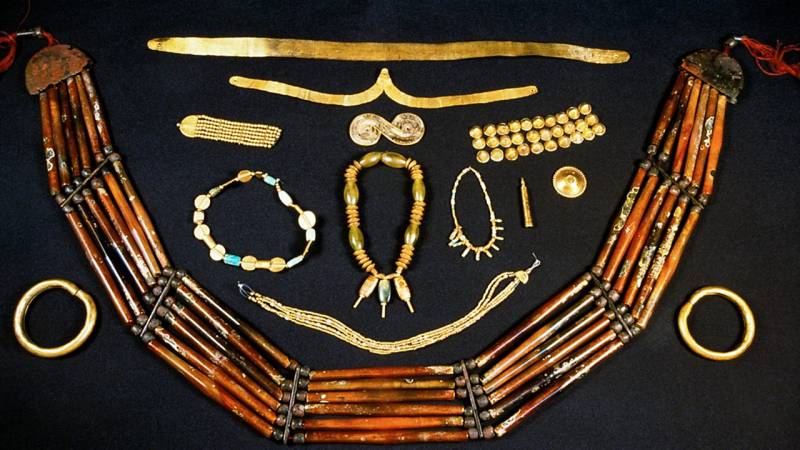
Invasion of Meluhha by Naram Sin (R. 2254–2218 BCE)
Naram Sin was grandson of King Sargon. He was the mighty king, the king of Agade and the four quarters of the world. Naram Sin started campaigns against rebel kings. He defeated the king of Uruk. Naram Sin, returning the rebel kings to his rule. And he mentioned ibra, man of Melukha. This name is found in the Royal Inscription of Gudea of Lagash (MS 2814), commemorating the defeat of Magan, Melukham, Elam and Ammuru and establishment of regular offerings to his statue. This Neo Sumerian and Old Babylonian clay tablet belongs to 2100-1800 BC.
It is said that Naram Sin, not only conquered Magan, but honoured the Magan King Mannu Dannu or Manium by naming the city of Manium-Ki in Mesopotamia after him. An inscription of Naram Sin known from 2 old Babylonian tablet copies from Nippur deals with a campaign against Magan:
“Further, he cros(ed)…the (Lower) S(ea) and conquered M(agan), in the midst of the sea.” (Page 97)
Four vases of Alabaster, Calcite, and Black Steatite bear an inscription of Naram Sin indicating they were booty of Magan: These vases were found from Ur and Babylon during excavations.
“A bowl, booty of Magan”. (Page 100)
“He conquered Magan and captured Maniu(m), the rul(er) of Magan”. (Page 117)
“In their mountains he quarried diorite stone and brought it to Agade, his city, and fashioned a statue of himself”. (Page 117)
“Mahaz(um), Pu(s),…E(bla), Mari, Tuttul,…, Urkis, Mukis,…,…, Abarnum, and the land where the cedars are cut down, along with their provinces, The land of Subartum on the shores of the (Upper Se(a), and Magan, along with (its) province(s)…the other side of the se(a) (Page 163)
A clay bulla found in excavations of de Sarzec at Telloh bears the seal impression of Su-ilisu, judge and servant of Naram Sin: The bulla, now housed in the Louvre, bears the museum no. AOTb. 378: the inscription was collated from the published photo.
“Su-ilisu, judge, (is) (his) servant.” (169)
Shar Kali Sharri and Meluhha (R. 2217–2193 BCE)
Shar Kali Sharri was son of King Naram Sin and grandson of King Sargon. He reigned 25 years. The end of King Shar Kali Sharri’s reign was a troubled period. He faced opposition from both within and outside his realm. He was unable to hold together the empire that his father had left. After the death of Shar Kali Sharri, Akkadian Empire collapsed and Igigi, Imi , Nanum and Elulu reigned for three years.
“The conquests of Shar Ghani Sharri and Naram Sin were also reflected in the articles of commerce that reached the market of Lagash, where contributions from Magan, Melukhkha, and Elam were not infrequently met with, and we even find the sale of slaves from such distant countries as Gutiu and Amurru recorded.” (A History of Sumer and Akkad by Leonard W King, Litt D, FSA, London 1916, Page 238)
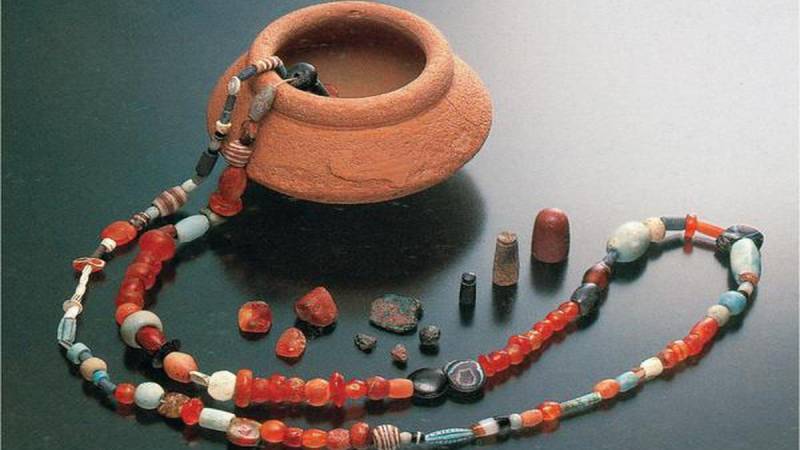
Priest King Gudea of Lagash and Meluhha (R. 2144–2124 BC)
Gudea was ruler of the State of Lagash in southern Mesopotamia. His royal palace was at Tello, Lagash or Shirpurla in ancient Mesopotamia. The ruins of this city extend about 4 English miles. It was the seat of government, art, literature and science. The antiquities discovered at this site include diorite statues, inscribed door sockets, inscribed clay cones, vessels, bricks etc. He devoted his life in building the Temple of god Ningirsu. For the beautification of the temple, he started trade and commerce with the East and the West for the precious materials. In The Great Cylinder Inscriptions A& B of Telloh (2450 BC), Gudea of Lagash says:
“The adoration of my temple covers the lands; its name will fill the countries from the ends of the heavens, from Magan and Melukhkha it will cause them to come”. (A-9; 19)
“From Elam the Elamites came to him, from Susa the Susians came to him, Magan and Melukhkha cut down for him timber from their mountains, for building the temple of Ningirsu, (these) Gudea assembled in his city Girsu”. (A-9; 15)
“For Gudea, silver from its mountains was brought; porphyry from Melukhkha, was made abundant for him. From the marble mountains, marble was brought.” (A-9; 16)
“Gudea, the patesi of Lagash presented them as gifts. The exalted ( ) out of a block of clear lapis lazuli, out of marble from Melukhkha…” (B-14, 13)
“From the country Melukhkha, he brought ushu-wood, he built it (into the temple): a block of Khukalu stone, he brought: into a mace (head) with three lion heads, he fashioned it. Gold dust from the mountains of Khakhum he brought; and the mace with three lion heads he gilded, from the country Melukhkha he brought: into the house of arms, he put it. …he brought. From Gubin in the country of Khulupu wood, Khulupu wood he brought: into the bird form sharur he carved it” (B-6; 63)
Tablets from the period of Urnammu, Shulgi, Amar Sin, Shu Sin and Ibbi Sin also highlight Meluhhan trade networks. After the collapse of Indus Valley Civilization around 1900 BC, the Meluhhan traders shifted to the Land of Punt or Africa. That is why this region was also called Meluhha and Magan. It was the time when Aryans occupied Indus Valley lands.
A 6,800-km-long Tigris Expedition was started by Norwegian ethnologist and adventurer Thor Heyerdahl in 1977. The expedition’s object was to rediscover the ancient lands and their trade routes from Mesopotamia (Iraq), to Dilmun (Bahrain) Magan (Oman) and Meluhha (Indus Valley/Pakistan), the Indian Ocean, the Punt (Somalia), Djibouti and the Red Sea.
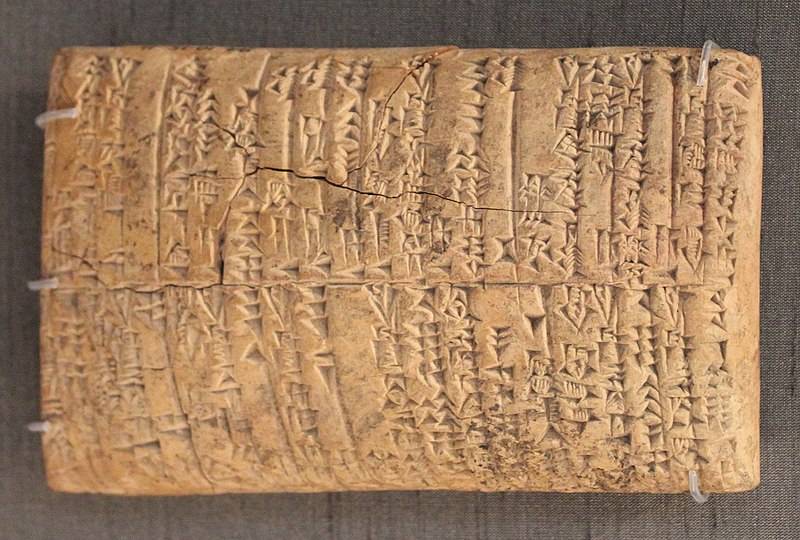
Conclusions and some explanations
- Where was Meluhha? It seems that Meluhha, Melukha or Meluhaki, the trading partner of ancient Mesopotamia, was situated in the east of Sumer, Akkad, Elam, Marhasi, Gupin and Magan. Meluhha was famous for mountains, rivers, cities, temples, granaries, sea, ships, boats, sailors, trees/wood, forests, copper, silver, gold, tin, carnelian, lapis lazuli, marble, dolerite, ivory, steatite and exotic wares.
- The people of Meluhha exported following trading items to their neighbouring countries: grains, vegetables, fruits, beads, cloth/textiles, dye, jewelry, metals, sea shells, pearls, flints, pots, ceramics, tools, oil, birds, animals and fish etc.
- Meluhha means, “The Country of Sailors.” I believe that the word Meluhha afterwards took the shape of Meluhan, Melhan and Mehran. And the last form, Mehran, is a synonym of the River Indus: a river that flows for some 2,000 miles or 3,200 km. The Indus Valley Civilization (with some 3,781 settlements) grew on the banks of River Indus and its tributaries.
- The Meluhhans traded with various Sumerian cities situated on the banks of the Euphrates and Tigris rivers. Around 25 Indus Seals with Harappan Script have been discovered from Ur (Mugaiyar), Babylon, Larsa, Umma (Djoka), Kish (Uhaimir), Lagash, Tell Asmar and Tepe Gawra (Mosul). See: SR Rao page 199. Girsu/Guaba, Lagash and Nippur had good populations from Meluhha. Others belonged to Susa (Iran), Failaka (Kuwait), Huma (Bahrain) and Oman.
- According to my point of view, WF Albright made a mistake in identifying Meluhha. He identifies Meluhha as Ethiopia, while the name Si-id-di-ri was in fact the Land of Sindhri, a region in the Indus Delta of Sindh province in Pakistan. Sindhri was a fort on the eastern branch of the Indus. It was submerged by the earthquake of 1819. Why, then, did WF Albright believe that Ethiopia was Meluhha? The simple answer is that he did not know about the discovery of 5,000-year-old cities of Harappa and Mohenjodaro discovered during 1920s.
- Meluhha is also mentioned by Neo Assyrian King Ashurbanipal in the Rassam Cylinder in 643 BC. This inscription was discovered by Hormuz Rassam in 1854 from Nineveh Palace, near Mosul, Iraq. According to these Assyrian texts Meluhha (Meore/Nubia) and Magan (Musur/Egypt) were kingdoms close to Egypt. Ashurbanipal had marched against these kingdoms. Gold and Ivory came from both Africa and India, but the carnelian of Meluhha could only come from Rajputana.
- Some of the Biblical historians have traced Mount of Khakhum with Khakh, gold mines in the southeast of Madinah. But I have identified Khakhum as the Mountain of Karakoram, which is the great source of gold dust even today. Gold Nomads of the Karakoram are called Somewal. Furthermore, Reko Diq (1978) in District Chaghai of Balochistan is a large copper and gold deposit containing 12.3 million tons of copper and 20.9 million ounces of gold. Saindak has also massive gold and silver reserves since 1995.
- King Rimush’s inscription: “Zahar, Elam, (G)upin, and (Me)luhha assembled in Pa(rah)sum for battle” suggests that Gupin was close to Meluhha and Magan. According to Steinkeller (2017) Gupin or Kupin was most probably Pakistani Balochistan. Some scholars think that Sutkagendor was Gupin. I propose that the Hingol mud volcano area now known as Chandra Kup was Gupin described by Sumerians. This Lord Shiva pilgrimage site is 3,000 years old.
- “May the land of Tukric hand over to you gold from Harali, lapis lazuli and…” This inscription clearly relates to the 670-km-long Aravali Range which starts from Delhi, crosses from Haryana, Rajasthan and ends near Ahmedabad Gujarat. Copper was mined here in 4000 BC. Ancient settlements of Kalibangan, Kunal and Haryana obtained gold, silver and copper here.
- The Old Babylonian Temple Records also describe god Shamash, SA Malahu ki, and his grain cargo. Sumerian word KI stood for place, ground/land or country, as Lagash-KI. Same Sumerian suffix is found in the last of the names of modern cities of Sindh, i.e Ghotki , Dahrki and Rahrki. In the ancient Dravidian languages, Ka corresponds to the Sumerian Ki. It was the past position of a determinative place after the name of places and countries. We have such names of cities and areas in Sindh even today, for example Machhka (Sukkur), Chandka (Larkana) or Kalka (Arore).
- King Naram Sin captured Ibra, the man of Melukha. No doubt the above mentioned Ibra is actually an Abra chief. The Abra is a warrior tribe of the Indus Valley since ages past.

